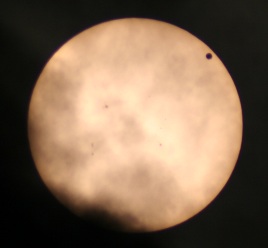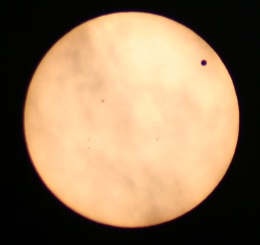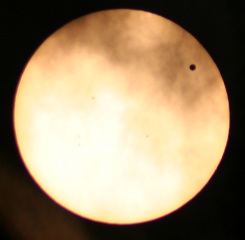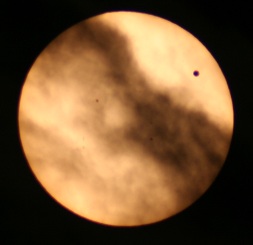|
|
Venus
Venus is the second planet from the
Sun, orbiting it
every 224.7 Earth
days. The planet is named after Venus, the
Roman goddess
of love and beauty. After the Moon,
it is the brightest natural object in the night sky,
reaching an apparent magnitude of −4.6, bright enough to
cast shadows. Because Venus is an
inferior planet from Earth, it never appears to
venture far from the Sun: its
elongation reaches a maximum of 47.8°.
Venus reaches its maximum brightness shortly before sunrise or shortly after
sunset, for which reason it has been known as the Morning Star or Evening Star.
Venus is classified as a
terrestrial planet and it is sometimes called
Earth's "sister planet" owing to their similar size, gravity, and bulk
composition. Venus is covered with an opaque layer of highly reflective
clouds of
sulfuric acid, preventing its surface from being seen from space in
visible light. Venus has the most dense
atmosphere
of all the terrestrial planets in the
Solar
System, consisting of mostly
carbon dioxide. The
atmospheric pressure at the planet's
surface is 92 times that of the Earth. Venus has no
carbon
cycle to lock carbon back into rocks and surface features, nor does it seem
to have any organic life to absorb it in biomass. Venus is believed to have
previously possessed oceans, but these
evaporated as the temperature rose owing to the
runaway greenhouse effect. The
water has most probably
photodissociated, and, because of the lack of
a
planetary magnetic field, the free hydrogen has been
swept into interplanetary space by the
solar wind.
Venus's surface is a dry desertscape with many slab-like rocks, periodically
refreshed by
volcanism.
Below are images of Venus as it transits in front of the Sun on June 6, 2012.
Click on image for high resolution (opens new browser)

|
Taken on June 6, 2012
Single 1/100 exposure
ISO 100
Orion AstroView EQ120
Un-modified Canon RebelXT 350D
Manually Focused
All Rights Reserved. Copyright © 2012 – Antonio Pascarella |
|
|
|

|
Taken on June 6, 2012
Single 1/100 exposure
ISO 100
Orion AstroView EQ120
Un-modified Canon RebelXT 350D
Manually Focused
All Rights Reserved. Copyright © 2012 – Antonio Pascarella |
|
|
|

|
Taken on June 6, 2012
Single 1/100 exposure
ISO 100
Orion AstroView EQ120
Un-modified Canon RebelXT 350D
Manually Focused
All Rights Reserved. Copyright © 2012 – Antonio Pascarella |
|
|
|

|
Taken on June 6, 2012
Single 1/100 exposure
ISO 100
Orion AstroView EQ120
Un-modified Canon RebelXT 350D
Manually Focused
All Rights Reserved. Copyright © 2012 – Antonio Pascarella |
|
|